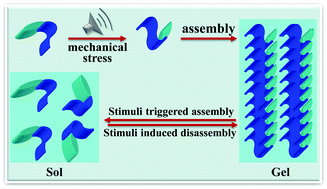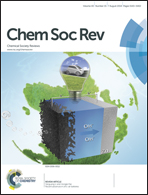Low-molecular-mass gels responding to ultrasound and mechanical stress: towards self-healing materials
Abstract
In this review, we focus on the types of smart supramolecular gels whose self-assembly processes are affected or even triggered by physical forces including sonication and mechanical stress (mechanical force). The types of gels that are responsive to sonication and mechanical stress are examined and summarised. The gels exhibit non-covalent interactions among the gelator molecules and show dynamic and reversible properties controlled by the stimuli. Upon stimulation, the gelators cause instant and in situ gelation of organic solvents or water with different modes and outcomes of self-assembly. On the other hand, sonication and mechanical stress, as external factors, can give rise to dynamic changes in microscopic morphology, optical properties, etc. Certain thixotropic supramolecular gels exhibit perfect self-healing characteristics. The driving forces and the mechanism of the self-assembly process and the responsive outcome of morphological and spectroscopic changes are discussed. Those supramolecular gels responding to sonication and mechanical stress offer a wide range of applications in fields such as smart and adaptive materials, switches, drug control and release, and tissue engineering.


 Please wait while we load your content...
Please wait while we load your content...